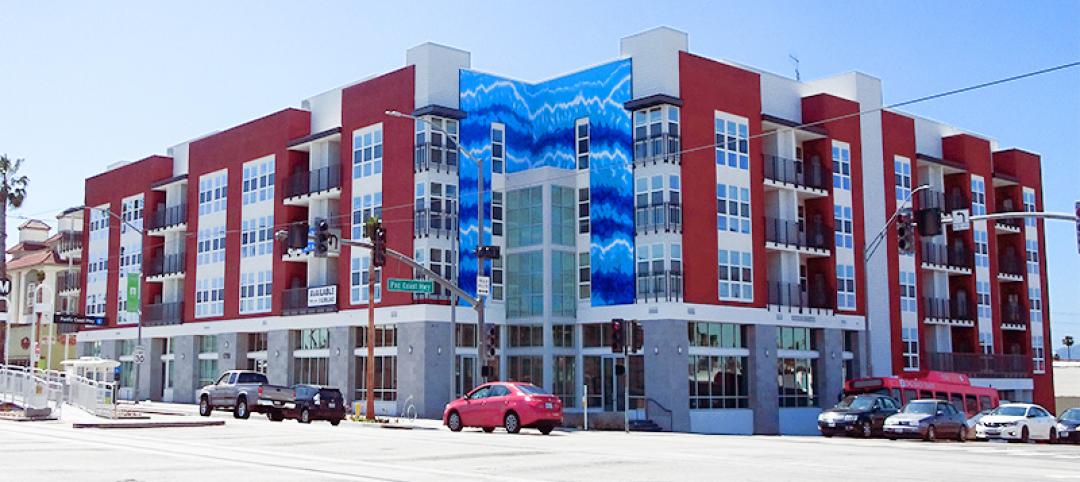Thirty percent. That’s the traditional metric of housing affordability, which holds that housing should cost no more than 30% of a family’s income. By that measure, about 55% of U.S. neighborhoods would be considered “affordable” for the average household.
When you factor in the cost of transportation, however, the percentage of neighborhoods that the typical family can afford falls to 26%, according to the Center for Neighborhood Technology, a nonprofit research group based in Chicago. Transportation is most household’s second-biggest expense, after housing.
The conundrum is that many lower-income families and individuals can’t afford to live in the more desirable areas served by good public transit. They are forced to choose neighborhoods whose housing they can afford, but which have limited transit service, or none at all. As a result, their housing costs may be 30% or less of total income, but the high cost of commuting to work makes their daily living costs unaffordable.
Transit-oriented developments help address this problem. TODs place housing at or near rail and bus service nodes and routes. This can, in many cases, enable lower-income residents to reduce the cost of their commute to work, making their total housing and transportation budget fall more in line with the traditional affordability metric.
Enterprise Community Loan Fund, an affiliate of the nonprofit Enterprise Community Partners, recently closed three deals that will create 462 renovated or newly constructed apartments in neighborhoods served by Denver’s transit system:
- Crosswinds at Arista, a $1.8 million loan to acquire vacant land in Broomfield, with rapid bus routes to Denver and Boulder. Sponsoring developer Gorman & Company plans to develop 159 one-, two-, and three-bedroom affordable apartments.
- Bonsai Apartments, a $2 million loan to acquire a nursery in Sheridan, 10 miles south of Denver, where Medici Development will build 149 new affordable apartments.
- Johnson & Wales Family Housing, a $5 million loan to acquire two student housing buildings on the former Johnson & Wales University campus. Archway Community Investment plans to turn the dorms into 154 affordable rental units. Buses with frequent rush-hour headways go right to downtown Denver.
The deals were financed through the Denver Regional Transit-Oriented Development Fund. Since 2010, the fund, a partnership among state and local housing agencies, banks, philanthropic institutions, and community development financial institutions (like Enterprise Community Loan Fund), has invested $50 million to renovate or build more than 2,000 affordable homes in the seven-county metro area. (All properties must meet Enterprise Green Communities criteria for the affordable housing sector. ) As loans are repaid, the capital goes toward new acquisitions to increase the supply of affordable homes near transit.
Seems like a pretty good model for other metro areas to adopt, don’t you think?
Related Stories
Sponsored | Multifamily Housing | May 23, 2022
An Integrated WRB Sheathing System Offers Big Benefits at Big Haus
Legislation | May 20, 2022
Arlington County, Virginia may legalize multifamily housing countywide
Arlington County, Va., a Washington, D.C.-area community, is considering proposed legislation that would remove zoning restrictions on multifamily housing up to eight units in size.
Multifamily Housing | May 11, 2022
Kitchen+Bath AMENITIES – Take the survey for a chance at a $50 gift card
MULTIFAMILY DESIGN + CONSTRUCTION is conducting a research study on the use of kitchen and bath products in the $106 billion multifamily construction sector.
Sponsored | BD+C University Course | May 10, 2022
6 steps to designing a modern wine display
Design-focused wine displays are becoming increasingly popular in amazing residential and commercial properties throughout the world. Top design/build professionals are using stylish wine racks and other premium materials to create wine cellars that are too beautiful to hide in out-of-the-way places like dusty basements. This course explains why wine cellars have become so popular and the key aspects of designing an appealing modern wine cellar, broken into six planning steps that should be considered during pre- or early-construction phases.
Multifamily Housing | May 10, 2022
Multifamily rents up 14.3% in 2022
The average U.S. asking rent for multifamily housing increased $15 in April to an all-time high of $1,659, according to Yardi Matrix.
Sponsored | Multifamily Housing | May 8, 2022
Choosing the right paver system for rooftop amenity spaces
This AIA course by Hoffmann Architects offers best practices for choosing the right paver system for rooftop amenity spaces in multifamily buildings.
Building Team | May 6, 2022
Atlanta’s largest adaptive reuse project features cross laminated timber
Global real estate investment and management firm Jamestown recently started construction on more than 700,000 sf of new live, work, and shop space at Ponce City Market.
Multifamily Housing | May 5, 2022
An Austin firm touts design and communal spaces in its student housing projects
Rhode Partners has multiple towers in various development stages.
Sponsored | BD+C University Course | May 3, 2022
For glass openings, how big is too big?
Advances in glazing materials and glass building systems offer a seemingly unlimited horizon for not only glass performance, but also for the size and extent of these light, transparent forms. Both for enclosures and for indoor environments, novel products and assemblies allow for more glass and less opaque structure—often in places that previously limited their use.















